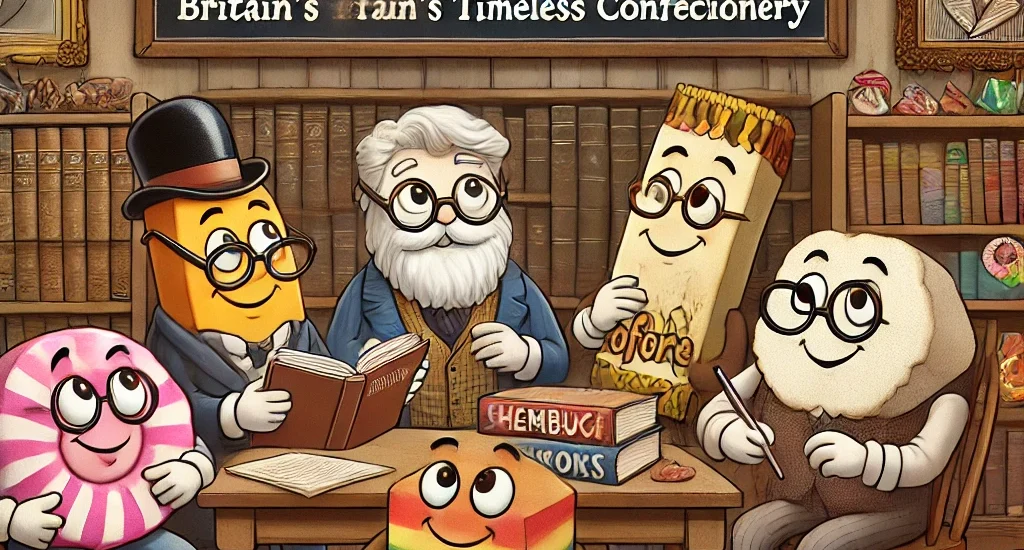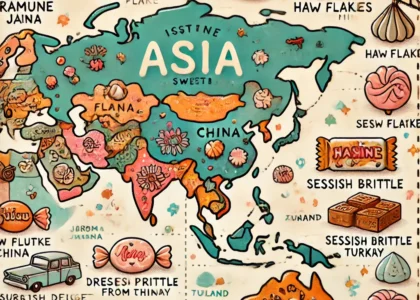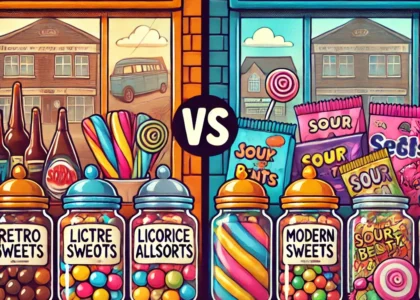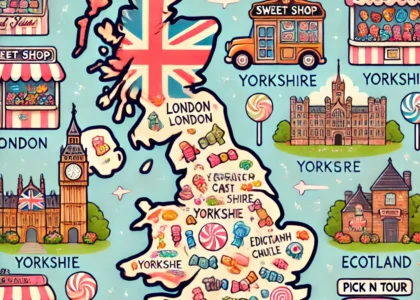Abstract
Retro sweets are more than nostalgic treats; they are cultural artifacts representing historical shifts in food technology, economics, and societal values. This paper explores the development, cultural significance, and resurgence of retro sweets within British society, demonstrating their enduring legacy as symbols of identity, memory, and heritage. Through analysis of industrialization, wartime influence, sociocultural roles, and modern consumer trends, this study contextualizes the enduring appeal and evolving market for retro confectionery.
Introduction
The consumption of confectionery is a universal cultural practice, yet the phenomenon of retro sweets—those candies and chocolates tied to specific historical periods—offers a unique opportunity to investigate the interplay between food, memory, and identity. Retro sweets, often associated with childhood and tradition, serve not only as sources of gustatory pleasure but as potent cultural symbols imbued with meaning. This article explores their evolution from industrial innovation to cultural icons, and their continued significance in contemporary Britain.
Historical Development of Retro Sweets
Industrialization and the Birth of Mass-Produced Sweets
The advent of the Industrial Revolution fundamentally transformed the production and consumption of sweets. Prior to mechanization, confectionery was largely handmade, expensive, and limited to the affluent. The late 19th and early 20th centuries saw the introduction of mechanized sugar refining and automated production lines, making sweets affordable to the burgeoning middle and working classes.
Companies such as Cadbury, Nestlé, and Rowntree capitalized on these technological advancements. For example, Cadbury Dairy Milk introduced in 1905, utilized improved milk processing techniques to create a richer, creamier chocolate that quickly gained widespread appeal. This product symbolized not only innovation but also a democratization of luxury food items.
Similarly, sweets like Liquorice Allsorts, introduced at the turn of the century, exemplify how confectionery companies leveraged novelty and variety to attract consumers. The accidental creation story of Liquorice Allsorts—originating from a spilled assortment—highlights the inventive spirit characteristic of early 20th-century sweet manufacturing.
Wartime Influence: Rationing and Adaptation
The World Wars profoundly affected sweet production and consumption. During both World War I and II, rationing limited sugar, cocoa, and other essential ingredients. Despite these restrictions, sweets remained culturally significant, serving as morale boosters for civilians and troops alike. The continued production of products like Jelly Babies and Wine Gums attests to their symbolic role in sustaining public spirits during hardship.
This period also saw manufacturers innovating with substitute ingredients and altered recipes. Such adaptations ensured sweets remained accessible, preserving their place in social rituals and daily life. These efforts are well documented in historical analyses such as The Guardian’s article on Jelly Babies, which traces their wartime popularity.
Cultural Significance and Social Functions
Nostalgia and Collective Memory
Retro sweets act as mnemonic devices, connecting individuals to formative experiences and shared cultural histories. Anthropological and sociological studies argue that sensory stimuli, especially taste and smell, trigger autobiographical memories more powerfully than other senses (Herz & Schooler, 2002). Retro sweets thus become conduits for nostalgia, evoking emotions tied to childhood, family, and community.
These sweets frequently appear in family rituals, festive celebrations, and cultural events, reinforcing collective identity. The cyclical nature of nostalgia, which renews interest in past pleasures, helps sustain the popularity of retro sweets across generations.
Identity, Heritage, and Social Rituals
In Britain, sweets such as Love Hearts and Haribo Starmix have transcended their status as mere products to become cultural icons. They play a role in social rituals — from courting behaviors symbolized by Love Hearts’ messages to the shared enjoyment of Starmix in social settings.
Marketing strategies reinforce these cultural roles by emphasizing heritage and authenticity, often through retro packaging and storytelling. These practices align with contemporary consumer desires for experiences rooted in tradition, identity, and emotional engagement.
Case Studies of Key Retro Sweets
Cadbury Dairy Milk: Chocolate as a Social Equalizer
Cadbury Dairy Milk exemplifies how chocolate transitioned from a luxury to a staple. The brand’s commitment to quality and consistent taste helped it survive shifting market conditions and consumer preferences. Moreover, Cadbury’s philanthropic ventures, such as establishing Bournville village for workers, intertwined social welfare with brand identity, deepening its cultural resonance.
Jelly Babies: Symbolism and Popular Culture
Originating in the early 20th century and popularized during WWII, Jelly Babies gained iconic status partly through association with public figures, such as George Harrison of The Beatles. Their soft texture and fruity flavors appeal to diverse palates, while their cultural representation in media and music videos enhances their nostalgic and cultural significance.
Love Hearts: Sweet Language and Social Interaction
Love Hearts, with printed messages, serve as tangible expressions of affection and playfulness. The evolution of messages to include modern phrases like “Text Me” illustrates their adaptation to contemporary social communication while maintaining nostalgic appeal.
Contemporary Revival and Market Dynamics
The Retro Revival in the 21st Century
Recent decades have witnessed a resurgence in demand for retro sweets, fueled by trends emphasizing authenticity, artisanal craftsmanship, and nostalgic marketing. This revival corresponds with broader societal trends questioning mass production and embracing heritage and provenance.
Retailers such as Swizzels and Maynards Bassetts have capitalized on this demand by reviving classic products and emphasizing their historical narratives. The rise of independent retro sweet shops and online specialty stores reflects a growing consumer segment eager for experiential purchasing.
Economic and Branding Implications
The retro sweets market highlights the commercial potential of emotional branding. Consumers demonstrate willingness to pay premium prices for products associated with positive memories and authentic experiences, reinforcing Pine and Gilmore’s concept of the Experience Economy.
Brands leverage this by packaging sweets in vintage-style wrappers, launching limited editions, and engaging storytelling marketing campaigns, which strengthen brand loyalty and differentiate products in a competitive marketplace.
Health Debates and Future Challenges
Nutritional Criticism and Reformulation
While nostalgia drives demand, health concerns regarding sugar consumption pose challenges. Public health campaigns increasingly target high sugar intake linked to obesity and diabetes, prompting manufacturers to explore reformulation, reduced sugar variants, and healthier alternatives without compromising nostalgic qualities.
Globalization and Cultural Exchange
Globalization influences retro sweets markets, introducing cross-cultural variations and hybrid products. While British retro sweets retain local significance, exposure to global confectionery trends requires balancing tradition with innovation to appeal to a wider audience.
Conclusion
Retro sweets embody a complex tapestry of historical, cultural, and economic factors. From their roots in industrialization to their wartime symbolism and contemporary revival, they illustrate how food functions as a medium of identity, memory, and social cohesion. Their continued popularity underscores the enduring power of nostalgia and heritage in consumer culture, presenting both opportunities and challenges for the future.





